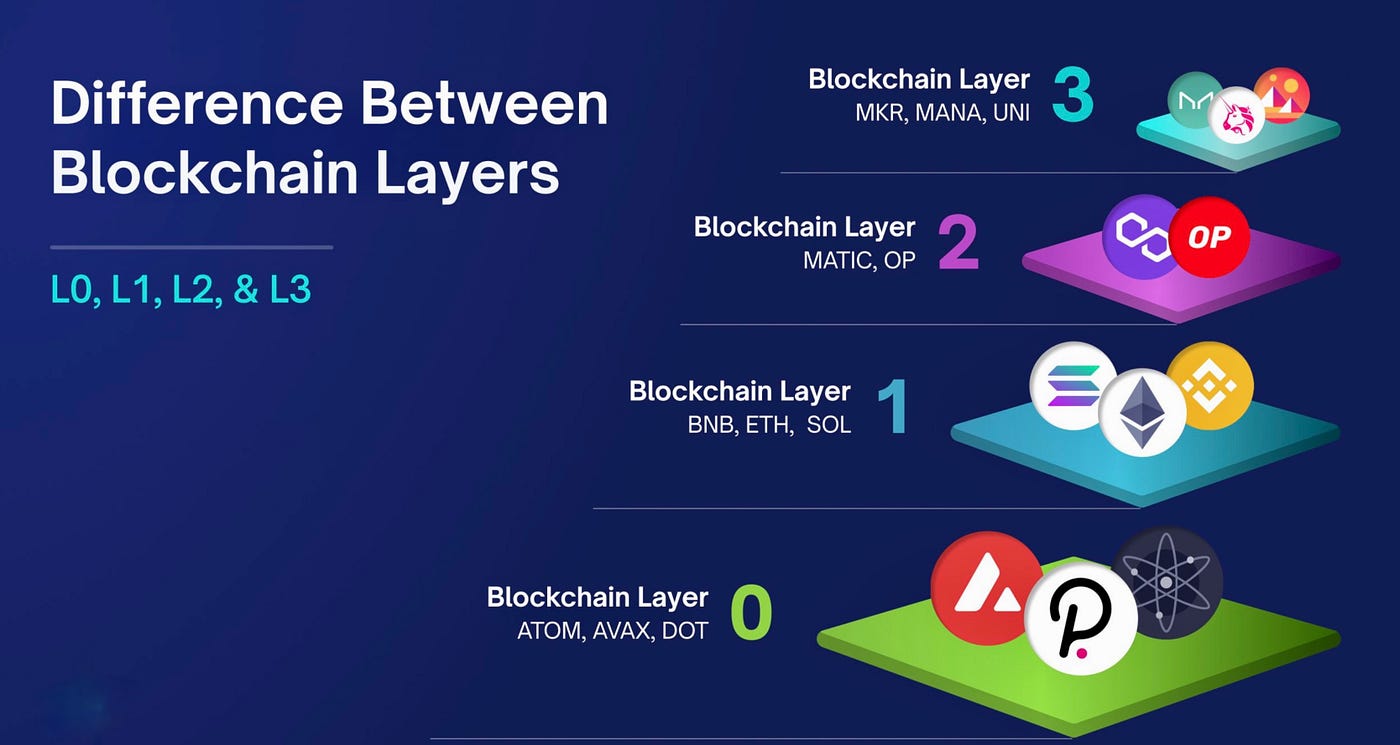
In the rapidly evolving world of blockchain technology, understanding the distinctions between Layer 1 and Layer 2 blockchains is essential. These two layers work together to enhance the capabilities of blockchain networks, ensuring security, decentralization, and scalability.
Table of Contents
- What is Layer 1?
- What is Layer 2?
- How Do They Work Together?
- Key Differences Between Layer 1 and Layer 2
- Conclusion
- Frequently Asked Questions (FAQs)
What is Layer 1?
Layer 1 blockchains are the foundational systems that form the backbone of the cryptocurrency landscape. Examples include Bitcoin, Ethereum, and Solana. These base layers are responsible for processing and finalizing transactions, offering robust security through consensus algorithms, and providing decentralization that empowers users and developers alike.
- Decentralization: Layer 1 blockchains operate on a decentralized network, allowing users to maintain control over their transactions without relying on a central authority.
- Security: They utilize advanced cryptographic algorithms to protect against hacking and fraud, ensuring the integrity of the blockchain.
- Sovereignty: Developers can create applications with full control over their smart contracts and transactions, fostering innovation within the ecosystem.

What is Layer 2?
Layer 2 solutions are built on top of Layer 1 blockchains, acting as high-speed rails that alleviate congestion on the primary network. These layers enhance scalability by redistributing the transaction load, allowing for faster processing and reduced costs.
- Scalability: Layer 2 blockchains can handle millions of transactions per second, significantly improving throughput compared to Layer 1.
- Cost Efficiency: By offloading some of the processing from Layer 1, Layer 2 solutions can reduce transaction fees, making them more accessible to users.
- Flexibility: Developers enjoy greater freedom to create applications that can leverage the benefits of both layers, optimizing user experience and performance.
How Do They Work Together?
The interaction between Layer 1 and Layer 2 is essential for creating a more efficient blockchain ecosystem. Layer 1 provides the security and decentralization that underpin the entire network, while Layer 2 enhances the speed and scalability necessary for widespread adoption.
Consider Layer 1 as the solid foundation of a building, while Layer 2 serves as the scaffolding that allows for expansion and growth without compromising the integrity of the structure. This synergy is crucial for the future of blockchain technology, enabling it to meet the demands of a growing user base.
Key Differences Between Layer 1 and Layer 2
| Feature | Layer 1 | Layer 2 |
|---|---|---|
| Functionality | Base layer for transaction processing | Enhances scalability and reduces costs |
| Security | High security with decentralized consensus | Inherits security from Layer 1 |
| Speed | Slower transaction times | Faster processing capabilities |
| Cost | Higher transaction fees | Lower transaction fees |
Conclusion
Understanding the relationship between Layer 1 and Layer 2 blockchains is crucial for anyone involved in the cryptocurrency space. Layer 1 provides the necessary security and decentralization, while Layer 2 enhances scalability and efficiency. Together, they create a powerful duo that drives innovation and adoption in the blockchain ecosystem.
Frequently Asked Questions (FAQs)
What is the main purpose of Layer 1 blockchains?
Layer 1 blockchains serve as the foundational systems that process and finalize transactions, offering security, decentralization, and sovereignty to users and developers.
How do Layer 2 solutions improve blockchain performance?
Layer 2 solutions enhance blockchain performance by offloading transaction processing from Layer 1, allowing for faster speeds, greater scalability, and reduced costs.
Can Layer 1 and Layer 2 blockchains operate independently?
No, Layer 2 solutions are built on top of Layer 1 blockchains and rely on them for security and finality, creating a synergistic relationship between the two layers.
Which is more secure, Layer 1 or Layer 2?
Layer 1 blockchains typically offer higher security due to their decentralized nature, while Layer 2 inherits the security measures of Layer 1, making it less secure in isolation.


![Unlocking the Power of Fan Tokens: A Step-by-Step Guide [Part 1]](https://coinqlo.com/wp-content/uploads/2024/12/Depositphotos_503743464_L-870x570.jpg)
![Creating Your Own Fan Token: A Step-by-Step Guide [Part 2]](https://coinqlo.com/wp-content/uploads/2024/12/0a6e2bc8-7679-4f96-8e43-ff7dfa1eca25-870x570.png)